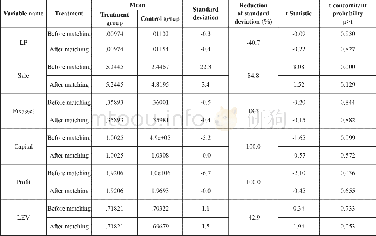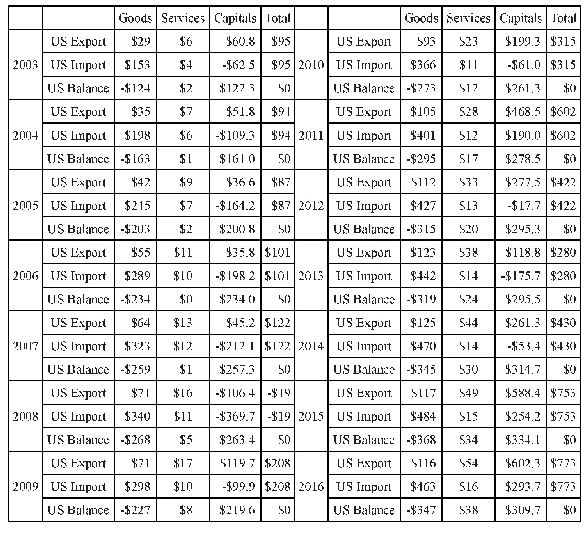《Table 2:Matching Balance Test》
 提示:宽带有限、当前游客访问压缩模式
提示:宽带有限、当前游客访问压缩模式
本系列图表出处文件名:随高清版一同展现
《An Empirical Research on Mixed-Ownership Reform and SOE Innovation: Evidence from China's Industrial Enterprises》
This paper employs kernel matching method5 for propensity score matching,and identifies the most similar unreformed SOEs for reformed SOEs based on the weight of kernel matching.Among samples during 1999-2007 observed in this paper,there are 1,987 reformed SOEs in the treatment group within the common value range after matching,and 18,739 unreformed control-group SOEs.In order to test whether data matching is balanced and reliable,the balanced assumption of propensity score matching has to be satisfied,i.e..That is to say,when propensity score is given,the treatment process is random(,and irrespective of whether a variable is in treatment group or control group,the observable distribution characteristics of individual firms with the same propensity scores are similar.In order to satisfy the balanced assumption of matching,we conduct a matching balance test for samples during 1999-2007.We may determine the reliability of matching based on the following criteria: (1)There is no significant difference in the matching variables of the two groups of firms(treatment group and control group)after matching;otherwise,the implication is that selection of matching variable or matching method is problematic;(2)after matching,the absolute values of standardization deviation of matching variables should be as small as possible,and the matching effect should be considered as desirable if the value is less than 5%.Test result is shown in Table 2.
| 图表编号 | XD007225100 严禁用于非法目的 |
|---|---|
| 绘制时间 | 2018.05.08 |
| 作者 | 王业雯、陈林 |
| 绘制单位 | Guangzhou College, South China University of Technology、Institute of Industrial Economics, Jinan University |
| 更多格式 | 高清、无水印(增值服务) |





